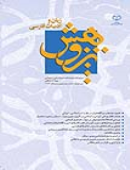دگرديسي نمادها در شعر معاصر
محورهای موضوعی : پژوهشهای ادبیات کلاسیک ایرانحسن شاهیپور 1 * , محمد خسروی شکیب 2
1 -
2 - دانشگاه لرستان
کلید واژه: نقد ادبي شعر معاصر دگرديسي تغيير معناشناختي نماد,
چکیده مقاله :
نمادها اين قابليت و توانايي را دارند که در مسير زمان و تاريخ تغيير کرده، دچار پوست اندازي معنايي شوند. گرايشهاي نمادين و سمبليک در حوزه ادبيات معاصر، علاوه بر اوضاع استبدادي و حکومتهاي ديکتاتوري و احتياط و ترس از سانسورهاي رسانه اي، و دگرگوني سبکي، ماحصل دقت و تلاش براي غناي جوهر هنري- ابهام- و همچنين شرکت دادن خواننده در امر خواندن و آفرينش ادبي، جهت لذت بيشتر است. شاعراني که از استقلال فکري و توانايي ابتکار بهره مند هستند نمادها را مواظبت کرده، آنها را از ابتذال و روزمرهگي و حتي مرگ نجات ميدهند. نيما و پيروان نظريه ادبي او با تکيه بر دو واژه «تناسب» و «طبيعي بودن» در به کارگيري نمادها، سعي داشتهاند تا نمادهاي تکراري، کهنه و مرده شعر کلاسيک را در معناهاي نو به کار گيرند تا علاوه بر عمق بخشيدن به شعر، نظريه سبکي خود را نيز غني کنند. تعدادي از نمادها را ميتوان به دليل ماهيت و ارزش ذاتي ناشي از قدمت يا معنا پذيري بيشتر و همچنين عملکرد موثر در سطح انواع هنر، ابر نماد خواند؛ چرا که قرار گرفتن روي مسير درست معنا يابي اثر ادبي در گرو درک و تلقي درست از اين ابرنمادها است. «آب»، «باد»، «شب»، «ديوار»، «آينه» و... از اين گونه هستند که در شعر معاصر فراوان به کار رفتهاند. چگونگي دگـرديسي معـنايي اين ابرنمـادها در حـوزه شعر معاصر سوالي است که در اين مقاله بررسي ميشود.
The symbols have the potential to change through time and history and revolve in concept and meaning. Symbolic tendency in the domain of contemporary literature is a result of the tyrannical situation and the dictator governments, added to the cautiousness and fear of media censorship, and stylistic transformations. All this can be furthermore combined with the delicate attempts taken for artistic enrichment; known as ‘ambiguity’, while it also intends to make the reader participate in the reading process and literary creativity in order to gain further enjoyment. Poets who are capable of independent thinking and are innovatively creative, protect the symbols; and save them from daily obscenity and even gradual death and decadence. Nima and the followers of his literary theory emphasized two words; that is “balance” and “naturalness” in using the symbols. They made an effort to utilize the repetitive, old and obsolete symbols within new concepts in order to enrich poems; in addition to enriching their own stylistic theory. Some of the symbols enjoy a particular entity and internal value, due to their history or flexibility in conveying multiple meanings and also being more influential in different artistic levels; therefore we can regard them as super-symbols. For gaining a proper semantic concept of a literary work demands an appropriate interpretation and understanding of such super-symbols. “Water”, “ wind”, “ night”, “ wall”, “ mirror” etc are some of such symbols; frequently used in contemporary poetry. The transformation of these super-symbols is the main question of the present article.

